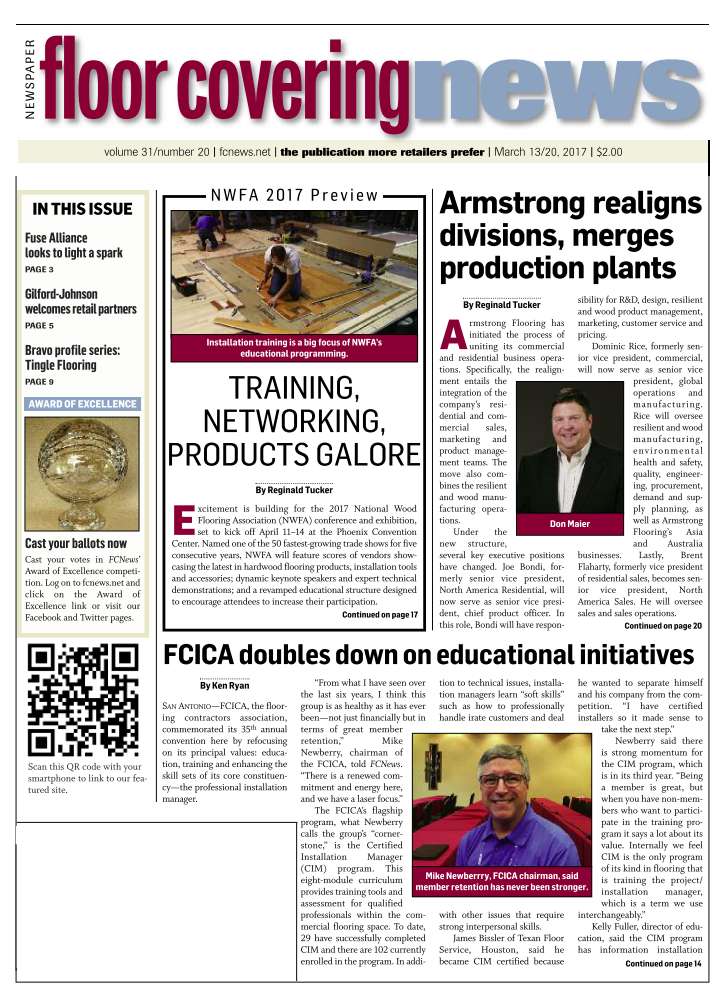March 13/20, 2017: Volume 31, Issue 20
By Graham Capobianco
President John F. Kennedy once said, “In crisis, be aware of the danger but recognize the opportunity.” This memorable quote is still relevant today, particularly as it pertains to the flooring industry’s well-documented labor shortage (the challenge) vs. the growth of the overall construction market (the opportunity).
The construction industry has been one of the fastest growing sectors in the U.S. over the past decade, due in large part to the recovery of the overall economy. The U.S. Bureau of Labor Statistics (BLS) projects the construction industry will add 700,000 jobs over the next seven years, making it the largest growing industry by 2024. In fact, 89% of construction firms expect to hire additional workers in the coming year alone. Another plus: The median annual wage for construction positions is 16% above average and is expected to continue to rise. Furthermore, 56% of construction firms expect to increase base pay rates over the next few years in order to retain employees.
While this may seem encouraging, the continued demand for labor is being stymied by two underlying issues: attrition and shortages. Research shows that from 2005 to 2012, the construction industry lost more than 1.4 million workers. Worse, most workers who lost their jobs during the recession never returned; many simply retired. Statistics show skilled laborers in general are twice as likely to retire at age 65 than all other industries.
While projections show the worst may be yet to come, most construction firms are already feeling the impact of labor shortages. A 2015 study conducted by the Associated General Contractors of America found 86% of construction firms are reporting difficulty filling both hourly and salary positions. Due to increased demand, 36% of construction firms reported losing laborers to other construction firms more willing to pay higher wages. Whether caused by a shift in public education toward college education or by the erroneously poor perception of skilled trades, the result remains the same: If the construction industry does not make a more concerted effort to leverage economic gains to increase training and recruitment, extend youth outreach and improve the perception of the trades, the economic potential created by the construction market will be stunted by increasing labor shortages.
Thankfully, there are some states and organizations working to address these issues. The International Standards and Training Alliance (INSTALL) provides valuable instruction and education in states or regions experiencing high rates of growth in construction in order to counterbalance labor shortages. Then there’s Run, Hope, Work, which conducts youth outreach via a holistic approach and construction-specific training. There is also the Ohio Strong Award, which specifically recognizes skilled trades and laborers in order to encourage young adults to pursue trade schools and vocational education programs.
If we are to continue to succeed as an industry, it is critical that we seize the opportunity to expand training, increase outreach and improve recognition within our industry.
Graham Capobianco, ICRI, LEED GA, is a fifth-generation floor covering professional with experience in commercial flooring sales and technical support. He is currently technical application specialist at Roppe.

